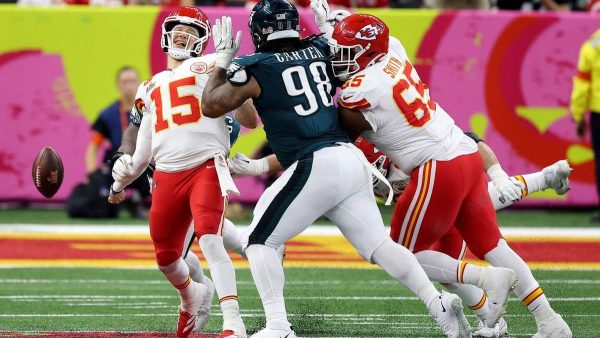Decision of school colors
Students, faculty, staff and fans proudly supported maroon and gold for 90 years but one of those colors can be seen to change over a period of time.
In 1922, the university was founded the school colors were maroon and white.The sports teams around that time including golf, tennis and unofficially football wore maroon and white for years.
However, other college teams supported maroon and white, lead into confusion on the field. During 1924-25 the school’s student-athletes agreed to change the colors to maroon and gold.
The students vote to make of official- maroon and gold when the university moved to its present campus in 1937.
In the Board of Regents has actually been the maroon color pantone 202 but no one enforced the standard.
Even though there was a set colors for the school, there was confusion on what the true colors were.
The university’s marketing team performed a test where they searched Midwestern State University and the search results showed the logos and colors were all different which was misleading to students and prospects.
Realizing a change needed to be done, the school entered into an agreement with Learfield Licensing Program. The program represents more than 570 clients with 53 institutions. The licensing guarantees permission to use property rights such as trademarks, patents or technology under defined conditions.
The benefits with the licensing program: added protection to the brand, consistency of logos and colors, additional opportunities for promotion and additional revenue system.
Julie Gaynor, director of marketing and public information, said “Being partners with LLP has helped so much with our brand. Before we had the agreement with them anyone could use our brand and can change anything they wanted to it because we had no say nor right to prevent them.”
After securing the school color and developing a new logo, everything was more in control for the university and collected profit off revenue.
The maroon color pantone 202, it seems a little different than the deep dark maroon people have always assumed it was.
Gaynor said “people always order different clothing items from company’s, each have their own definition of what maroon looks like to them so no one knew anymore what are true colors were.”
So while some people thought the school colors changed from maroon to red, but it was just a change in what defined maroon looks like to them.
Sandra Barnett, assistant director of marketing and public information, worked together with Gaynor to find the perfect maroon for the school.
Barnett said LLP told us maroon and gold are the hardest colors to get because the shades of maroon can vary so much.
Students share their insight on the shift of colors.
Christopher Hawkins, freshman sport and leisure, said the color change doesn’t affect him. “I only been here one semester so that’s the color I only known,” Hawkins said.
The Hawkins said, “We should keep the red because it pops out, and it goes nice with the gold.”
The color has change before so Hawkins said there’s a chance it could change again over the years. “A lot can happen in a couple of years so I can definitely see it changing again.”
Other students like Imani Morlock, junior kinesiology, said she cares about the school changing the colors. “I don’t like the red because it’s basic and bland. It doesn’t stand out at all.”
As being a student for three years she always preferred the old colors. “I really like the maroon and gold and the school should go back to how it use to be.”
Morlock doesn’t think they’ll change the colors again since there’s been already so much change.
1922- university colors maroon and white
1937- maroon and gold
1987- Board approved of colors
2016-learfield licensing program enforced
2017- new logos












